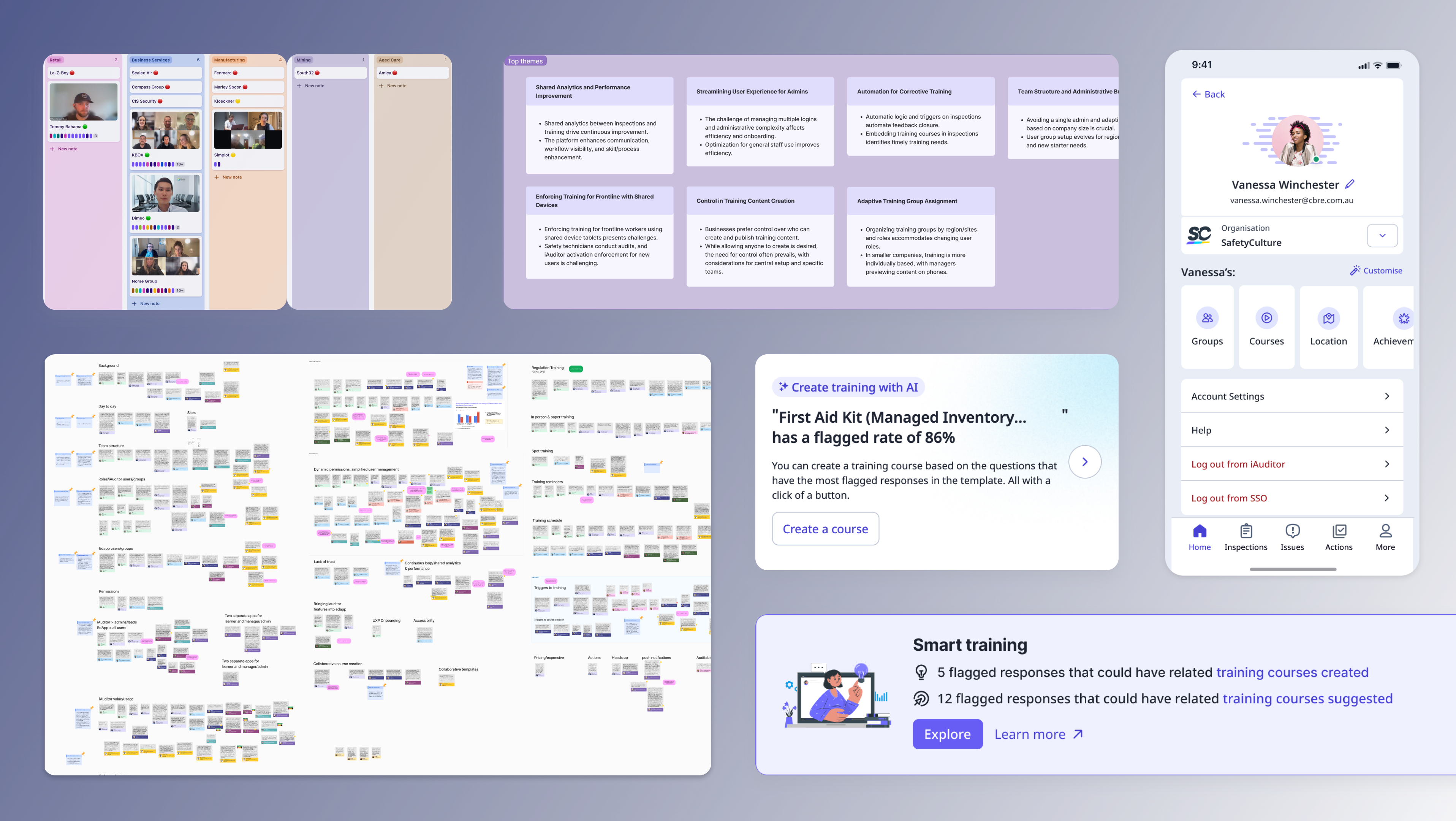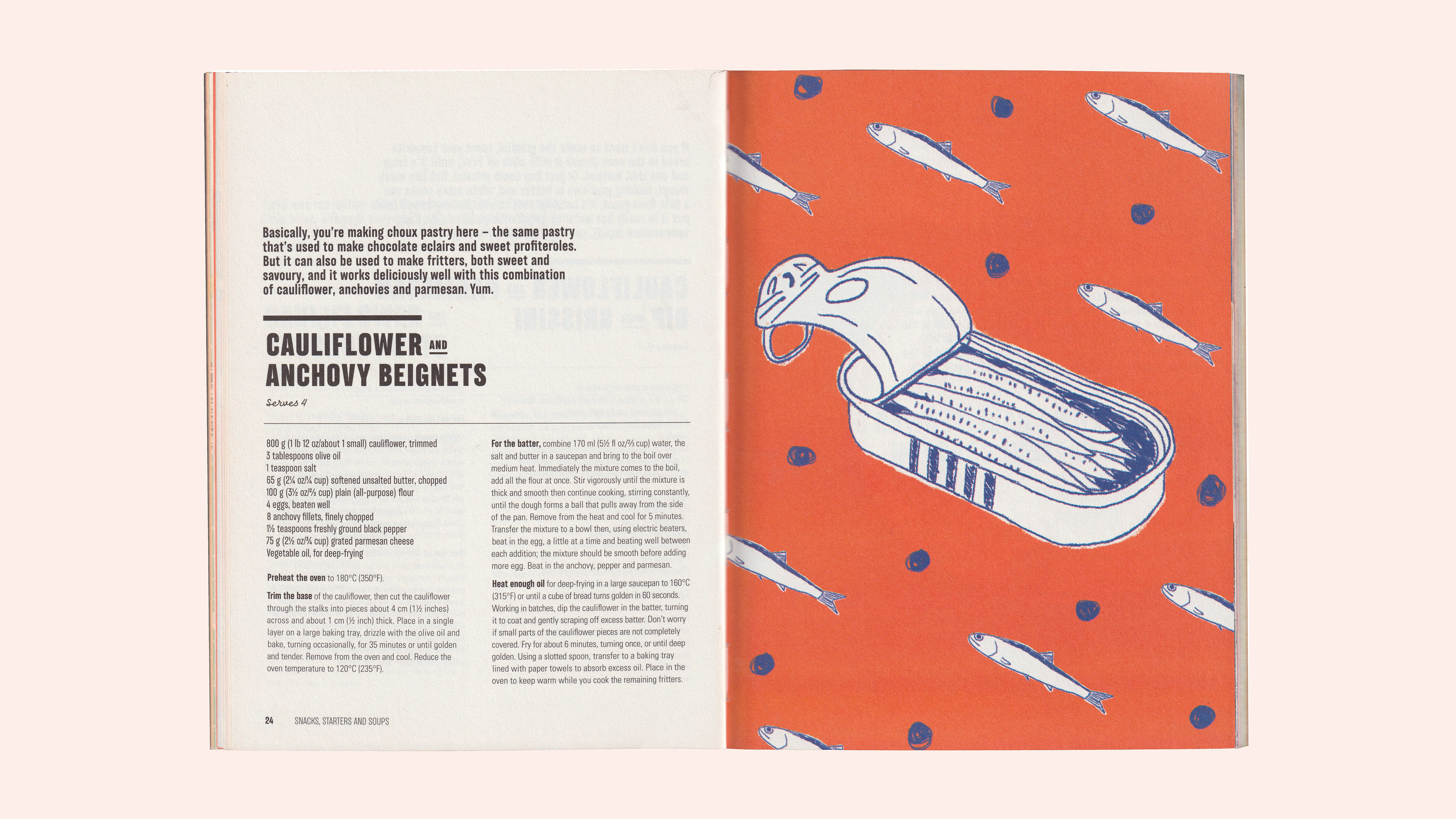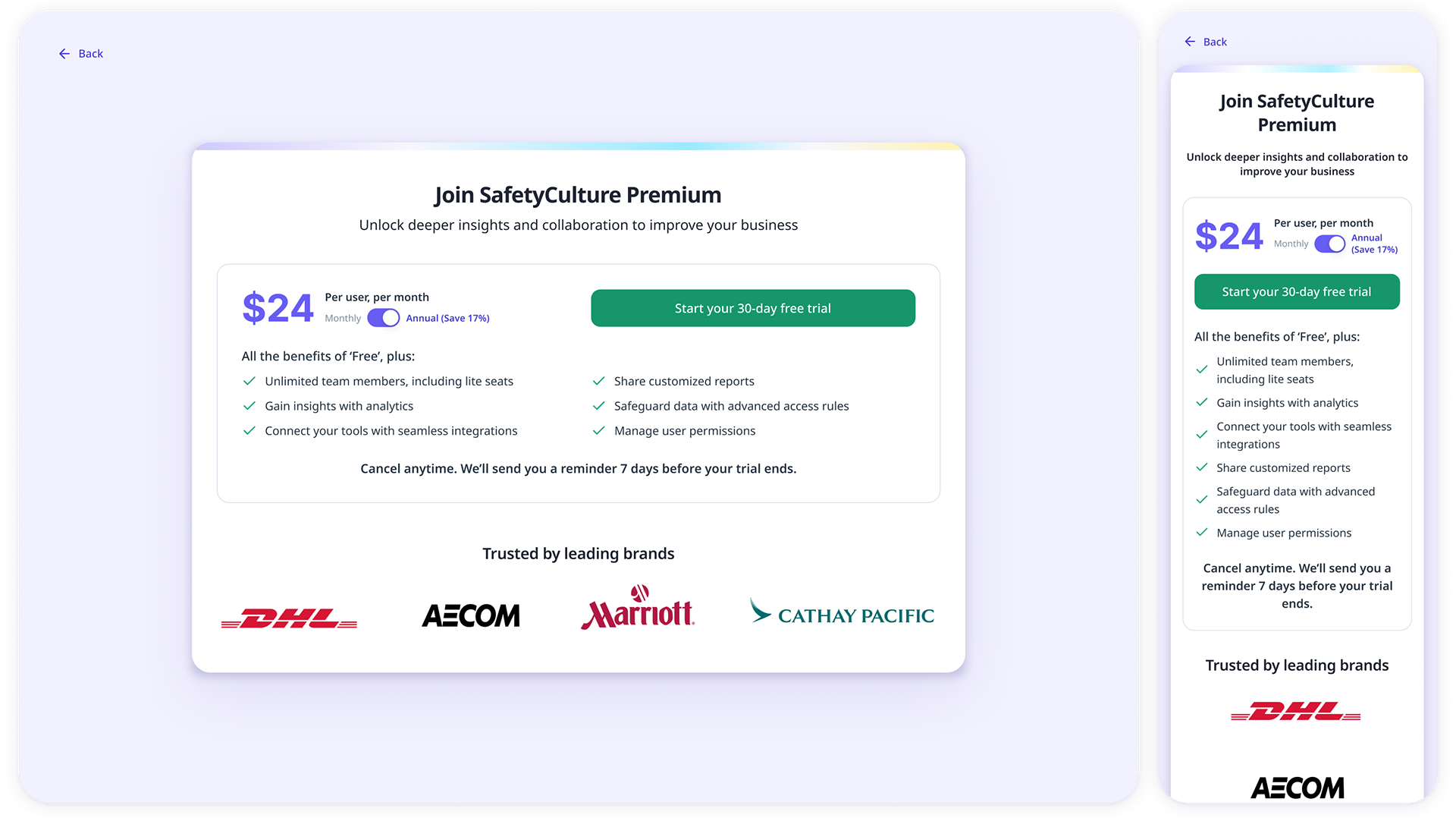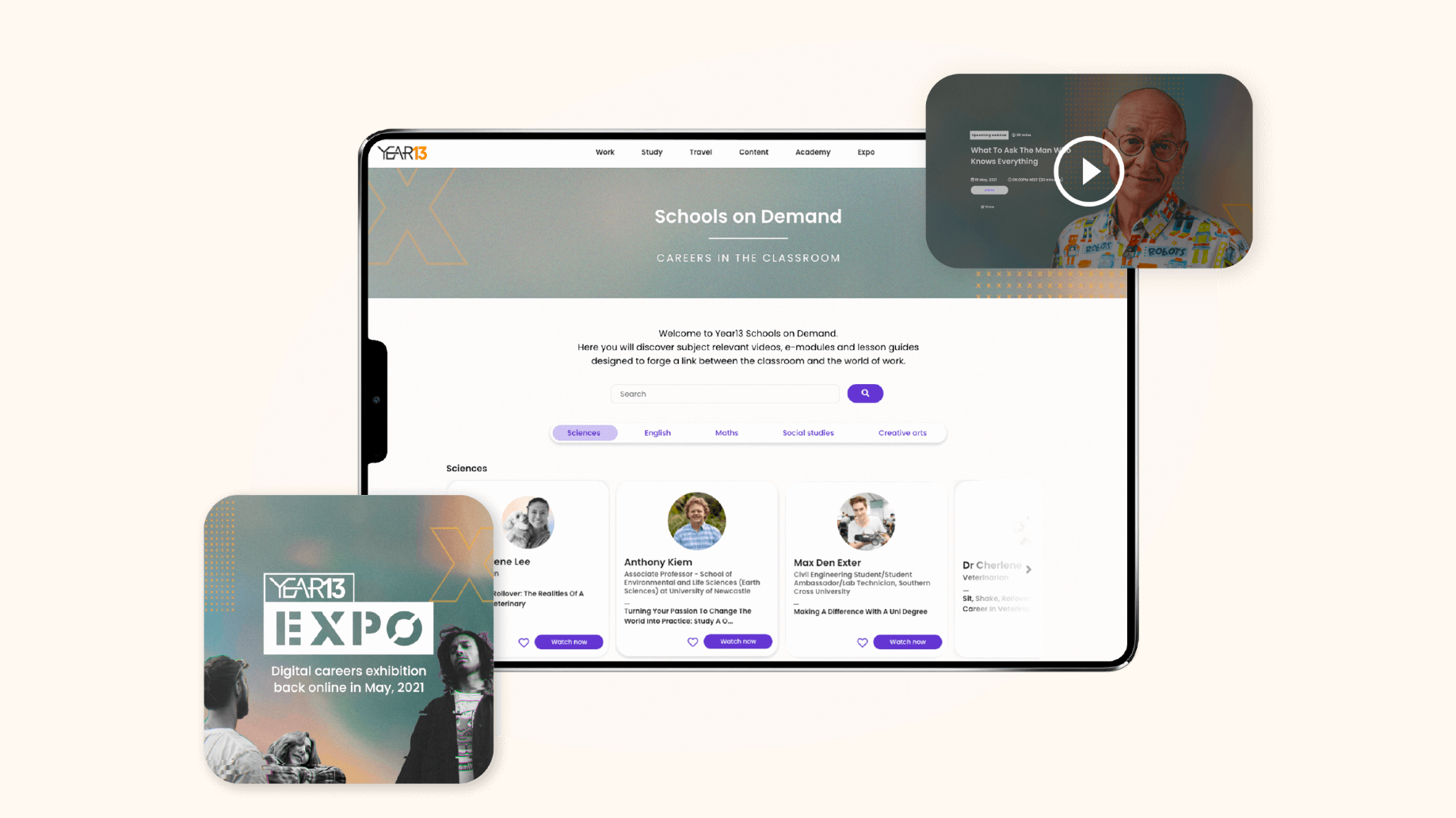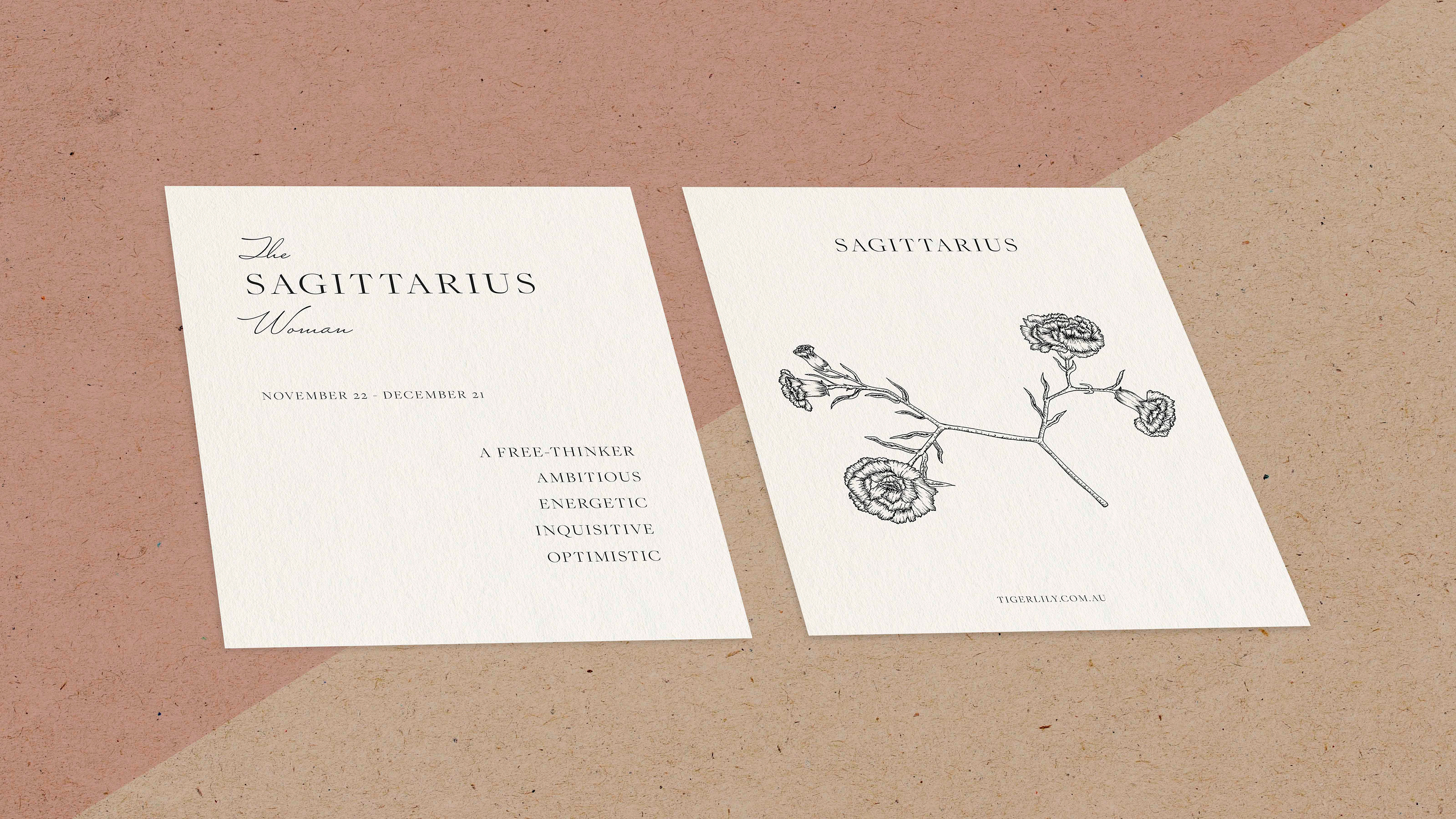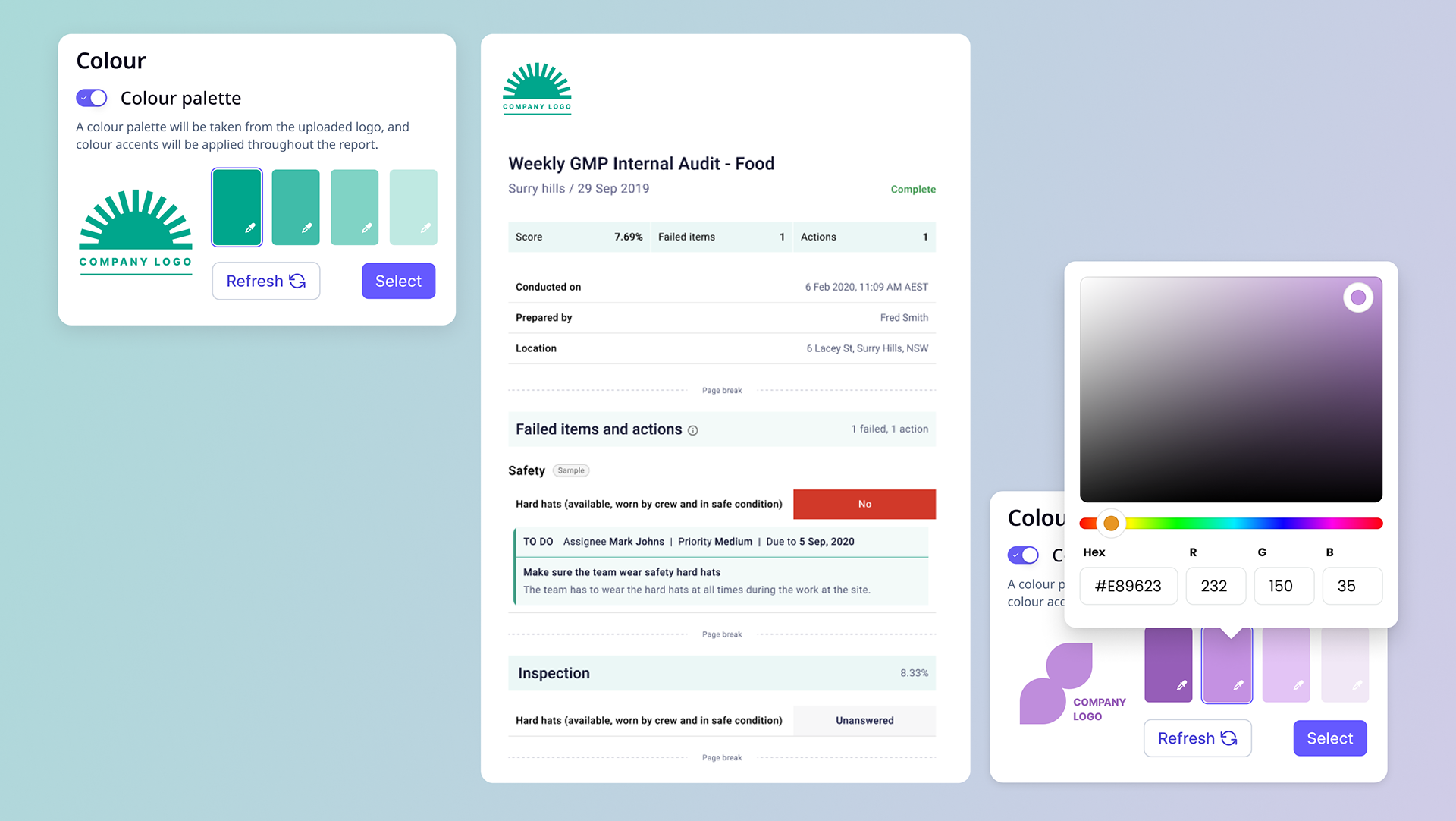Business problem: SafetyCulture is facing a significant challenge in securing enterprise tenders due to a deficiency in our platform's support for risk and incident management, resulting in a competitive disadvantage in the market.
Customer problem: Organizations are reassessing their risk exposure, examining risk processes and reconsidering who should be involved in risk management. Companies that currently take a reactive approach to risk management -- guarding against past risks and changing practices after a new risk causes harm -- are considering the competitive advantages of a more proactive approach. Organisations want to unify all their safety processes, applications and software into the one platform, as using multiple software, causes friction with staff, onboarding and keeping processes up to date.
My role: Lead the entire design process, framing the problems, speaking with customers, ideation, prototyping, validation of user experiences and design delivery. This project also involved extensive stakeholder management, as senior directors and the head of product were directly involved.
My role: Lead the entire design process, framing the problems, speaking with customers, ideation, prototyping, validation of user experiences and design delivery. This project also involved extensive stakeholder management, as senior directors and the head of product were directly involved.
The risk management chart shows all the pillars and stages involved in a risk management process.
SafetyCulture want to focus on improving the Incident Mitigation and Incident management functionality we have in our product. Incident mitigation is how a business can track hazards, near misses and sensor alerts. Incident management is how a business manages an incident investigation after an incident occurs; collating photos, witness statements, initiating further investigations and tracking corrective actions.
SafetyCulture want to focus on improving the Incident Mitigation and Incident management functionality we have in our product. Incident mitigation is how a business can track hazards, near misses and sensor alerts. Incident management is how a business manages an incident investigation after an incident occurs; collating photos, witness statements, initiating further investigations and tracking corrective actions.
To initiate the project, we documented all the jobs to be done within incident management and mitigation. This was done to pinpoint the essential steps that a Safety Manager must undertake. The jobs also provided a checklist to audit our current product "Issues" and note where the product did not adequately support crucial jobs.
__________________________
Old incident reporting form
The old incident reporting form had a lot of feedback from customers and sales that it was too clunky, the form fields were broken up into too many steps and screens and there was no option to make fields required. This affected crucial incident information not being captured and created friction for front line workers to report on incidents.
New incident reporting form
Optimize incident data capture with a unified form, offering enhanced control through customizable field reordering and required field options.
New incident reporting form
New incident reporting form - Mobile
Old incident profile
The previous design featured conflicting CTA buttons, lacked familiarity compared to other incident dashboard tools, had an unorganized layout, and inconsistent placement of linked actions and inspections, lacking a cohesive order.
Profile wireframes
In the new profile, I experimented with different layouts for where the fields, widgets, and where different views would go. The goal was to unclutter the profile, make it more organised, familiar, easy to navigate and create a structure that would help support future widget additions in the future.
New incident profile
The updated profile showcases organized widgets and a flexible layout, allowing seamless integration of future products. Enhanced navigation provides users with a clear view of their incidents through a separate dashboard, activity log, and a dedicated files tab. Designed with a focus on a Design System, this profile serves as a reusable pattern for consistency across various product areas.
A reusable profile layout
In this project, design leaders asked whether I could approach the new design of the Issue profile, so it could be reused as a platform pattern for other profile pages across different products in the platform. Other products also had outdated profiles, and the goal was to uplift them all. Collaborating with designers from the different design teams and the design system, I created a reusable layout structure that would offer consistency and flexibility.
Reusable components
In addition to creating a reusable layout, I designed reusable components that can be used in the Issue profile and other product areas. Some of these components included a new "Files" widget, a new "Side panel" and an "Activity/chat" page. Collaborating closely with the Design System team, these components were designed to be both responsive and flexible, ensuring seamless integration for other product teams.

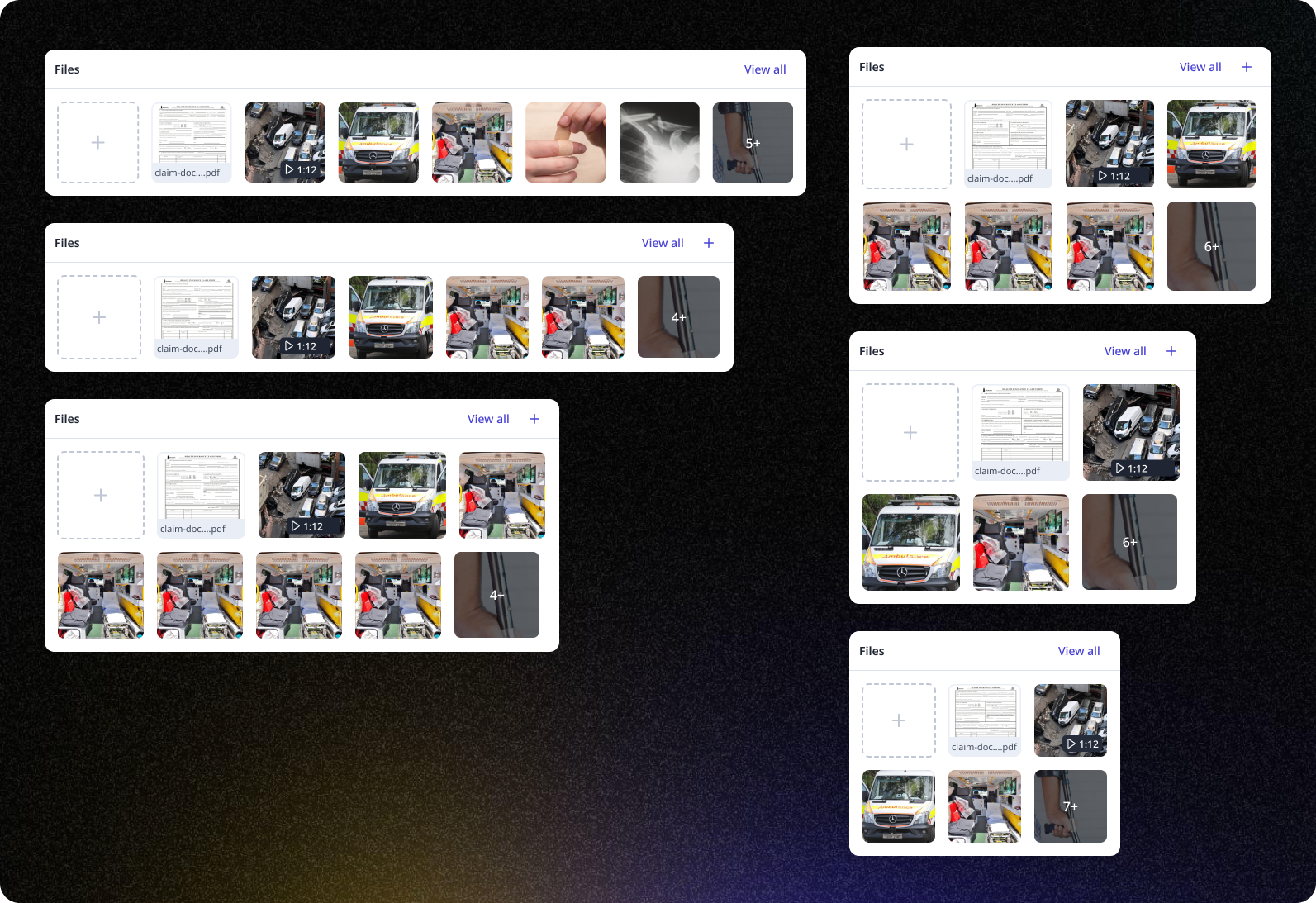

Profile tab views
Impact
Together with my engineering team, we enhanced the existing ‘Issues’ product to position SafetyCulture as a solution offering in enterprise tenders.
These enhancements included:
• Streamlined issue capture form.
• Critical alert notifications.
• Redesigned issues profile page.
• Enhanced email notifications.
• Improved integrations with Issues and other product areas.
• New data table functionality.
• Streamlined issue capture form.
• Critical alert notifications.
• Redesigned issues profile page.
• Enhanced email notifications.
• Improved integrations with Issues and other product areas.
• New data table functionality.
Metrics and KPIs:
• Reduction in Incident Reporting Time:
Before: The old incident reporting form was cumbersome, leading to an average reporting time of 15 minutes per incident.
After: With the new streamlined form, the average reporting time decreased to 8 minutes, a 47% reduction.
Before: The old incident reporting form was cumbersome, leading to an average reporting time of 15 minutes per incident.
After: With the new streamlined form, the average reporting time decreased to 8 minutes, a 47% reduction.
• Increase in Incident Report Completion Rates:
Before: Incomplete incident reports were a common issue, with a 25% incompletion rate.
After: The new form's required fields and improved usability reduced the incompletion rate to 5%.
Before: Incomplete incident reports were a common issue, with a 25% incompletion rate.
After: The new form's required fields and improved usability reduced the incompletion rate to 5%.
• Customer Satisfaction Scores:
Before: Customer satisfaction related to incident management was rated at 3.5 out of 5.
After: Post-redesign, the satisfaction score increased to 4.7 out of 5, reflecting improved user experience.
Before: Customer satisfaction related to incident management was rated at 3.5 out of 5.
After: Post-redesign, the satisfaction score increased to 4.7 out of 5, reflecting improved user experience.
By leading this project, we enhanced SafetyCulture’s 'Issues' product, making it a competitive solution for enterprise tenders. The redesign received positive feedback, improved incident management discussions with customers, and positioned SafetyCulture as a comprehensive operations platform.
